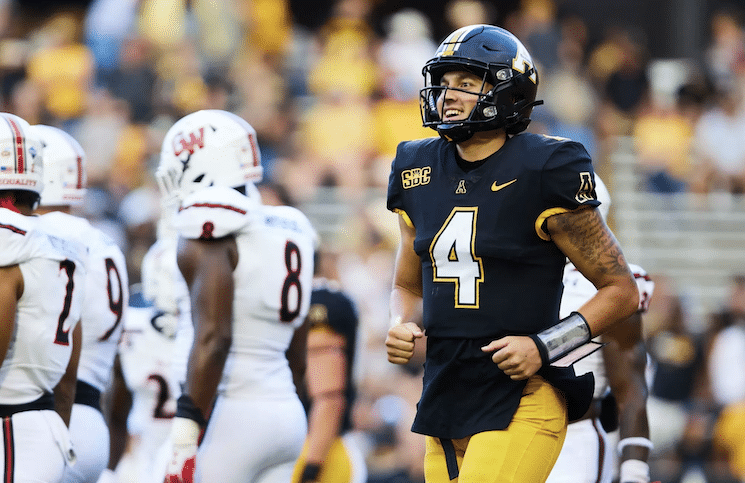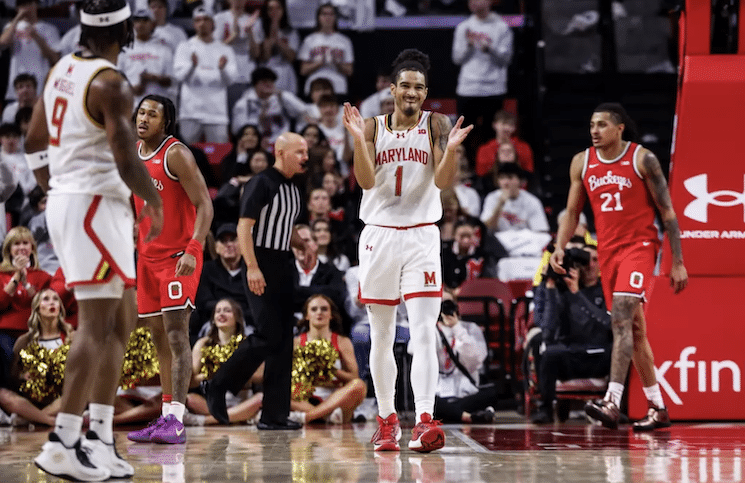
Tennessee begins their 2019 season on Saturday when they host Georgia State in Neyland Stadium. The Vols return a large amount of production on offense from last season, and few returning players are more important than starting quarterback Jarrett Guarantano.
The redshirt junior started all 12 games for Tennessee last season as a redshirt sophomore, and he was fairly consistent despite the inconsistencies around him on offense. Guarantano finished with 1,907 passing yards, 12 touchdowns, and only three interceptions while completing 62.2 percent of his 246 pass attempts. Guarantano finished with the lowest interception rate in the SEC last season, but he was near the bottom of the conference in passing touchdowns among qualifying quarterbacks.
There’s plenty of room to improve for Guarantano, and Vol fans are hoping the New Jersey native can tap into his potential even more in his second season as the full-time starter.
If there’s a coach who can help Guarantano realize that potential, it’s Jim Chaney. And luckily for the Vols’ signal caller, Chaney is back in Knoxville to call plays for UT’s offense in 2019.
Chaney has helped develop five NFL draft picks, two All-Americans, and a Maxwell Award winner at the quarterback position in his coaching career. He’s also helped downtrodden quarterbacks turn into capable starters in just one season.
The last few stops for Chaney have seen him inherit a lot of roster turnover and a brand new signal caller on offense. At Arkansas (2013), Pittsburgh (2015), and Georgia (2016), Chaney turned to a new starter at quarterback from the previous season. But at Purdue (1997) and his first stop at Tennessee (2009), Chaney took a quarterback who played the previous season and helped him grow into a much-improved version of himself.
Can that hold true in 2019, too?

In 1996, Purdue had a revolving door at quarterback, and none of the three QBs who played were very successful. Rick Trefzger saw the most action, completing 56.5 percent of his 170 passes for 1,158 yards, eight touchdowns, and eight interceptions. Backup Billy Dicken appeared in several games as well, completing only 49.4 percent of his 81 pass attempts for 518 yards, a touchdown, and four interceptions.
When Chaney took over as offensive coordinator in 1997, he turned to Dicken, now a senior, as his starter. While Dicken was far from an All-American performer, he looked much better than he did the previous season, and Chaney’s (and Joe Tiller’s) more open and pass-friendly scheme that season helped Dicken immensely.
As a senior starter, Dicken completed 55 percent of his 407 pass attempts for a whopping 3,136 yards, 21 touchdowns, and 16 interceptions. Dicken also ran for 351 yards and six scores on 97 carries.
Dicken’s transformation, along with a much better Boilermaker defense, helped Purdue turn a 180 in one season. The Boilermakers were 3-8 in 1996, but they finished 9-3 in 1997.
Similarly, Chaney’s first year in Knoxville in 2009 saw him take an embattled Jonathan Crompton and turn him into one of the most productive passers in the SEC.
In 2008, Tennessee’s offense was abysmal. The Vols’ offense that year is arguably still to this day the worst offense in modern UT history. Crompton started for most of the season at quarterback for Tennessee, completing only 51.5 percent of his 167 pass attempts for 889 yards, four touchdowns, and five interceptions. The Vols limped their way to a 5-7 record that season, and it resulted in the firing of Phillip Fulmer as head coach.
With the help of Chaney and new head coach Lane Kiffin, Crompton looked like a new man as a senior in 2009.
Crompton showed one of the more drastic turnarounds in recent Tennessee history with his performance that season. The senior starter completed 58.3 percent of his 384 passes for 2,800 yards, 27 touchdowns, and 13 interceptions. His 27 passing scores finished second in the SEC behind only Ryan Mallett of Arkansas, and his 2,800 passing yards were the fourth-most in the conference, trailing only Mallett, Florida’s Tim Tebow, and South Carolina’s Stephen Garcia.
Before Chaney and Kiffin, Crompton had a grand total of one career game where he threw for 200 or more yards, and that came against UAB in 2008. He had no games of 250-plus yards passing at all in his career. Crompton came into 2009 having thrown two or more touchdown passes in just three games in his career.
In 2009, Crompton eclipsed the 200-yard passing mark in all but four of the 13 games he started, including four games of 250 yards or more. The senior tossed two or more touchdowns in eight games that season as well.
That major improvement helped Tennessee go from 5-7 in 2008 to 7-5 in the regular season in 2009. The Vols would fall to 7-6 after a loss to Virginia Tech in the Peach Bowl, but it was clear that Crompton’s turnaround was a big reason UT showed improvement in 2009.
Since taking over at Purdue in 1997, Chaney’s first-year quarterbacks have been productive. Dicken, Crompton, Brandon Allen, Nathan Peterman, and Jacob Eason all put up solid seasons under Chaney in his first year calling plays, and Dicken, Crompton, and Peterman all look revitalized and transformed thanks to Chaney’s influence. Both Allen and Eason were true freshmen who Chaney guided to success.
All in all, those five quarterbacks averaged a 56.2 percent completion percentage, 2,441 yards, 19.4 touchdowns, and 11 interceptions in Chaney’s first year calling plays for them.
But when you look at the two situations that are comparable to Guarantano and Tennessee this year, the numbers look even better.
Dicken and Crompton, two older quarterbacks who struggled the previous year, showed massive improvement from their previous seasons, and those two averaged a 56.6 percent completion percentage, 2,968 yards, 24 touchdowns, and 14.5 interceptions in their first year under Chaney. If you want to also throw Nathan Peterman into the mix considering how dreadful he was in his two starts at Tennessee in 2013 and 2014 before transferring to Pittsburgh, those averages change to 2,741 yards, 22.7 touchdowns, and 12.3 interceptions on a 58.1 percent completion percentage.
If Guarantano can show the same type of growth that Billy Dicken, Jonathan Crompton, or Nathan Peterman did under Chaney in their first year under the veteran play-caller, then Tennessee’s offense should help the Vols find a lot more success in 2019.




